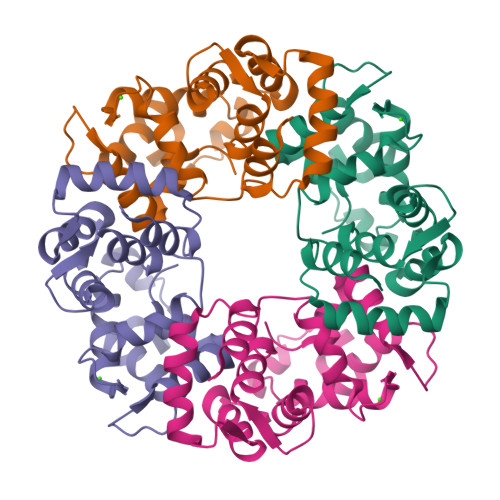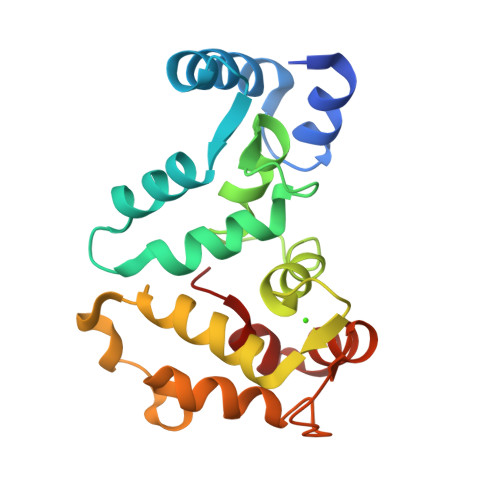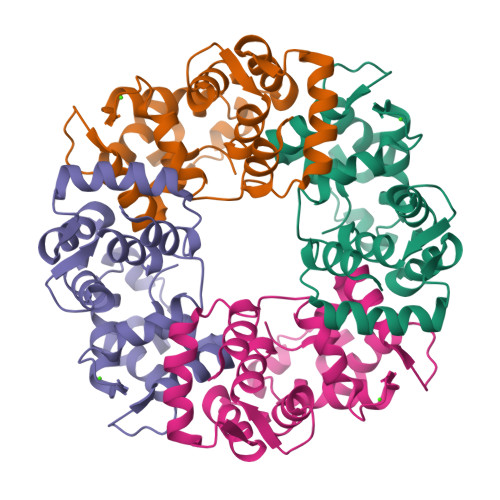Tuning of a neuronal calcium sensor.
Weiergraber, O.H., Senin, I.I., Zernii, E.Y., Churumova, V.A., Kovaleva, N.A., Nazipova, A.A., Permyakov, S.E., Permyakov, E.A., Philippov, P.P., Granzin, J., Koch, K.W.(2006) J Biological Chem 281: 37594-37602
- PubMed: 17015448
- DOI: https://doi.org/10.1074/jbc.M603700200
- Primary Citation of Related Structures:
2HET - PubMed Abstract:
Recoverin is a Ca(2+)-regulated signal transduction modulator expressed in the vertebrate retina that has been implicated in visual adaptation. An intriguing feature of recoverin is a cluster of charged residues at its C terminus, the functional significance of which is largely unclear. To elucidate the impact of this segment on recoverin structure and function, we have investigated a mutant lacking the C-terminal 12 amino acids. Whereas in myristoylated recoverin the truncation causes an overall decrease in Ca(2+) sensitivity, results for the non-myristoylated mutant indicate that the truncation primarily affects the high affinity EF-hand 3. The three-dimensional structure of the mutant has been determined by x-ray crystallography. In addition to significant changes in average coordinates compared with wild-type recoverin, the structure provides strong indication of increased conformational flexibility, particularly in the C-terminal domain. Based on these observations, we propose a novel role of the C-terminal segment of recoverin as an internal modulator of Ca(2+) sensitivity.
Organizational Affiliation:
Institut für Biologische Informationsverarbeitung (IBI-2, Biologische Strukturforschung), Forschungszentrum Jülich GmbH, D-52425 Jülich, Germany.























